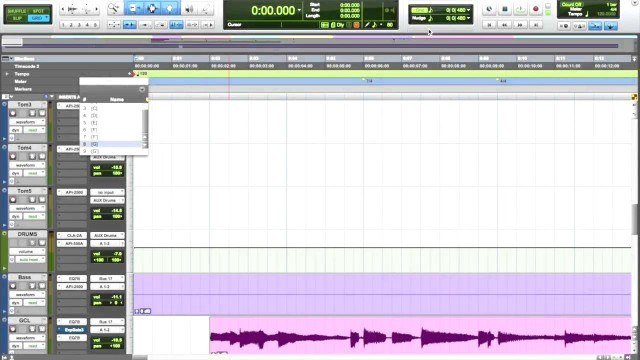The notes on a guitar fretboard are not easy to find because every note may have as many as 5 different places where you could play it. On a piano, it's easier to see where these notes are because they are all laid out neatly for you, but on a guitar it's harder. So in this case, I will show you different intervals on the neck on a single string to show how intervals are raised or lowered. When dealing with intervals beyond the octave, the same rules that apply to the 1st through 8th intervals are also true for the notes that are 9th through 13th. Remember that those notes are the same but just one octave higher so the 9th, 10th and 13th are major and have the same rules concerning raising and lowering major intervals. And in addition, the 11th and 12th have the same rules concerning raising and lowering perfect intervals.
Here are a few examples on the fretboard to show how some intervals are raised or lowered:
(Ex.1)- A perfect interval lowered one half-step becomes a diminished interval.
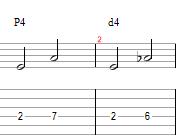
(Ex.2)- A perfect interval raised a half-step becomes an augmented interval.
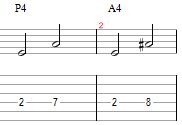
(Ex.3)- A major interval raised by one half-step becomes an augmented interval.
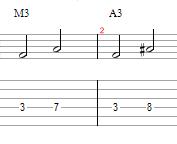
(Ex.4)-A major interval lowered by one half-step becomes a minor interval.
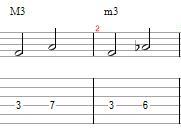
Any interval or note can be spelled in more than one way because of the use of sharps and flats. Any two notes that sound the same but have different names are called enharmonic equivalents. For example: D# and Eb are two names for the same note; as are E# and F, Gx and A, and B# and C.
To invert an interval, take the upper note of the pair and transpose it down one or 2 octaves depending on the circumstances so the upper note becomes the lower note.
Remember:
Perfect stays Perfect
Major goes to minor
minor goes to Major
diminished goes to Augmented
Augmented goes to diminished
Now, the "rule of 9" just means that if you wish to find the numerical value of an inverted interval, subtract the value of the original interval from 9. This new number will be the value of the inverted interval. If your original interval is a 2nd, subtract this number from 9. The inverted interval will be a 7th.
Ok, that's the end of part 3. In part 4, we will go over how to determine interval number and quality. See you then!
















































